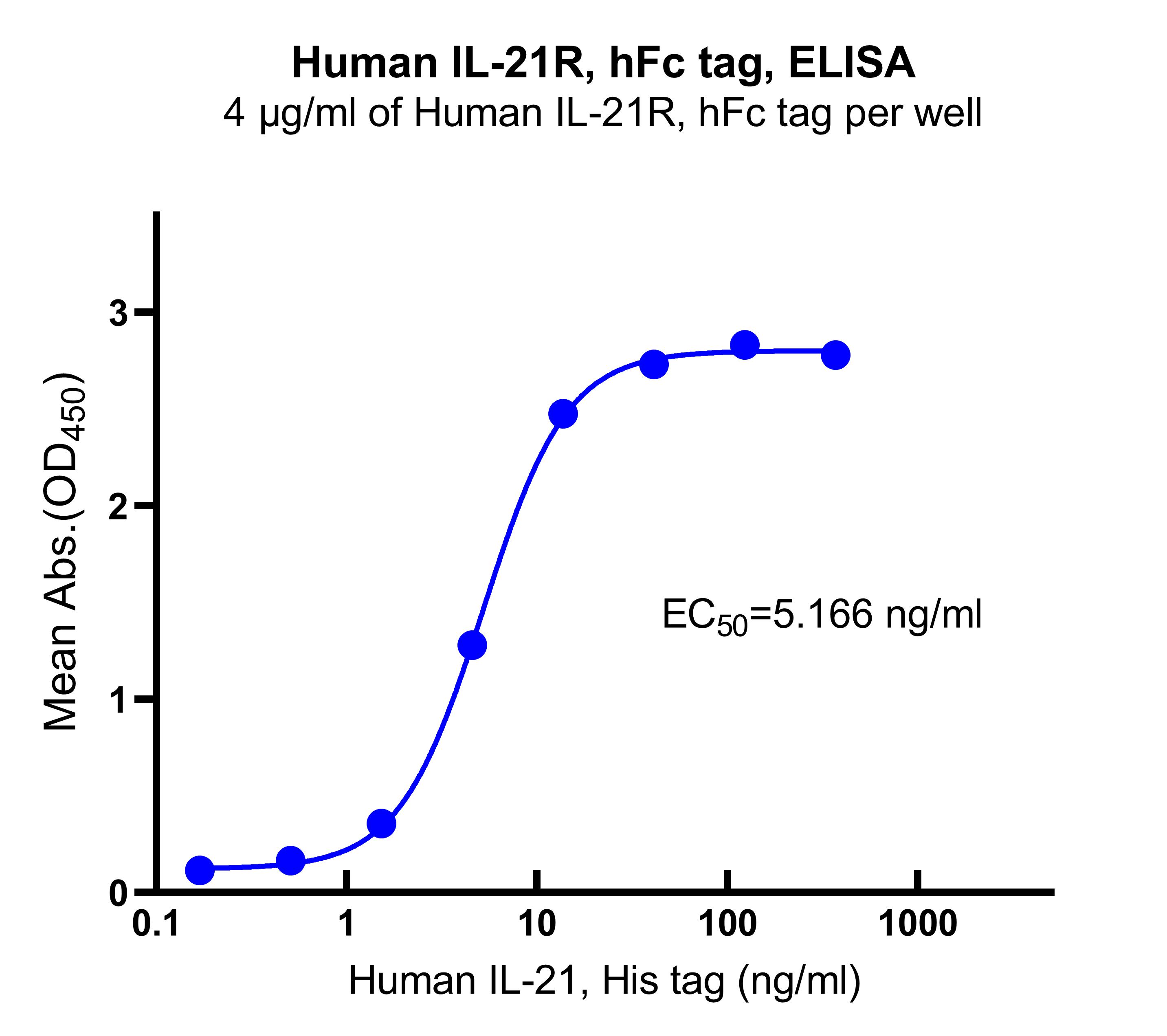Protein sequence (Q9HBE5, Cys20-Pro236, with C-hFc) CPDLVCYTDYLQTVICILEMWNLHPSTLTLTWQDQYEELKDEATSCSLHRSAHNATHATYTCHMDVFHFMADDIFSVNITDQSGNYSQECGSFLLAESIKPAPPFNVTVTFSGQYNISWRSDYEDPAFYMLKGKLQYELQYRNRGDPWAVSPRRKLISVDSRSVSLLPLEFRKDSSYELQVRAGPMPGSSYQGTWSEWSDPVIFQTQSEELKEGWNPEPKSCDKTHTCPPCPAPELLGGPSVFLFPPKPKDTLMISRTPEVTCVVVDVSHEDPEVKFNWYVDGVEVHNAKTKPREEQYNSTYRVVSVLTVLHQDWLNGKEYKCKVSNKALPAPIEKTISKAKGQPREPQVYTLPPSRDELTKNQVSLTCLVKGFYPSDIAVEWESNGQPENNYKTTPPVLDSDGSFFLYSKLTVDKSRWQQGNVFSCSVMHEALHNHYTQKSLSLSPGK
12 months from date of receipt, -20 to -70 °C as supplied. 6 months, -20 to -70 °C under sterile conditions after reconstitution. 1 week, 2 to 8 °C under sterile conditions after reconstitution. Please avoid repeated freeze-thaw cycles.
Interleukin 21 receptor is a cytokine receptor for interleukin 21 (IL21). It belongs to the type I cytokine receptors, and has been shown to form a heterodimeric receptor complex with the common gamma chain (γc), a receptor subunit also shared by the receptors for interleukin 2 (IL2), interleukin 7 (IL7) and interleukin 15 (IL15). This receptor transduces the growth promoting signal of IL21, and is important for the proliferation and differentiation of T cells, B cells, and natural killer (NK) cells. The ligand binding of this receptor leads to the activation of multiple downstream signaling molecules, including JAK1, JAK3, STAT1, and STAT3. Knockout studies of a similar gene in mouse suggest a role for this gene in regulating immunoglobulin production. Three alternatively spliced transcript variants encoding the same protein have been described.

Immobilized Human IL-21R, hFc tag at 10 μg/mL (50 μL/well) can bind Human IL-21, His tag (Cat. No. S0A4042) with EC50 of 4.878-5.470 ng/ml.
2 μg(R: reducing conditions)